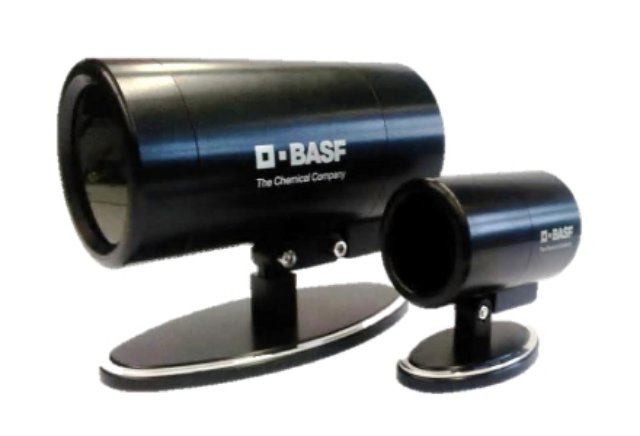 Chemicals giant BASF SE has developed a single-lens passive optical sensor that can measure distance to an object and thereby 3D position detection and 3D imaging. The company hopes to develop the sensor for a broad range of applications from consumer electronics such as cameras and smartphones to automotive, transportation, medical and machine vision and security and surveillance.
Chemicals giant BASF SE has developed a single-lens passive optical sensor that can measure distance to an object and thereby 3D position detection and 3D imaging. The company hopes to develop the sensor for a broad range of applications from consumer electronics such as cameras and smartphones to automotive, transportation, medical and machine vision and security and surveillance.
The 3D Sensor is based on a “new physical effect” enabled by the use of specially developed dye-sensitized organic light sensitive chemicals. The effect is complex and described in patent WO 2012110924 A1.
It appears to hinge on methods to measure the amount of light falling on a sensor surface and the direction from which it is falling while the light is chopped at two different modulation frequencies and with specific knowledge of the focal depth of lens. One key statement in the patent is that “The sensor signal, given the same total power of the illumination, is dependent on a geometry of the illumination, in particular on a beam cross section of the illumination on the sensor area.”
However, it is a novel method that could be simpler than established methods. These are two or multi-lens triangulation to determine 3D position, which is computationally intensive, and time-of-flight measurements of light, which depends on a modulated optical source, typically infrared, and is therefore not suitable for long range measurements where the transmitted beam can be blocked or dissipated by atmospheric effects.
The combination of chemistry, materials science and physics has produced a system capable of tracking and imaging objects in three dimensions at about twice the speed of the human eye and brain, BASF claims.
The system is able to detect and image over distances ranging from microns to kilometres dictated only by the lens. The sensor works passively and only needs ambient light. In darker surroundings the sensor can be operated with active visible or infrared light sources.
The sensor size is comparable to CMOS image sensor chips and so the BASF 3D sensor can be integrated into consumer or professional cameras, mobile phones, tablet computers and could be integrated with a conventional 2D image sensor. With the addition of appropriate software the sensor can be used for purposes beyond imaging, such as autofocus, object, gesture, facial and body expression recognition.
Source: EE Times
